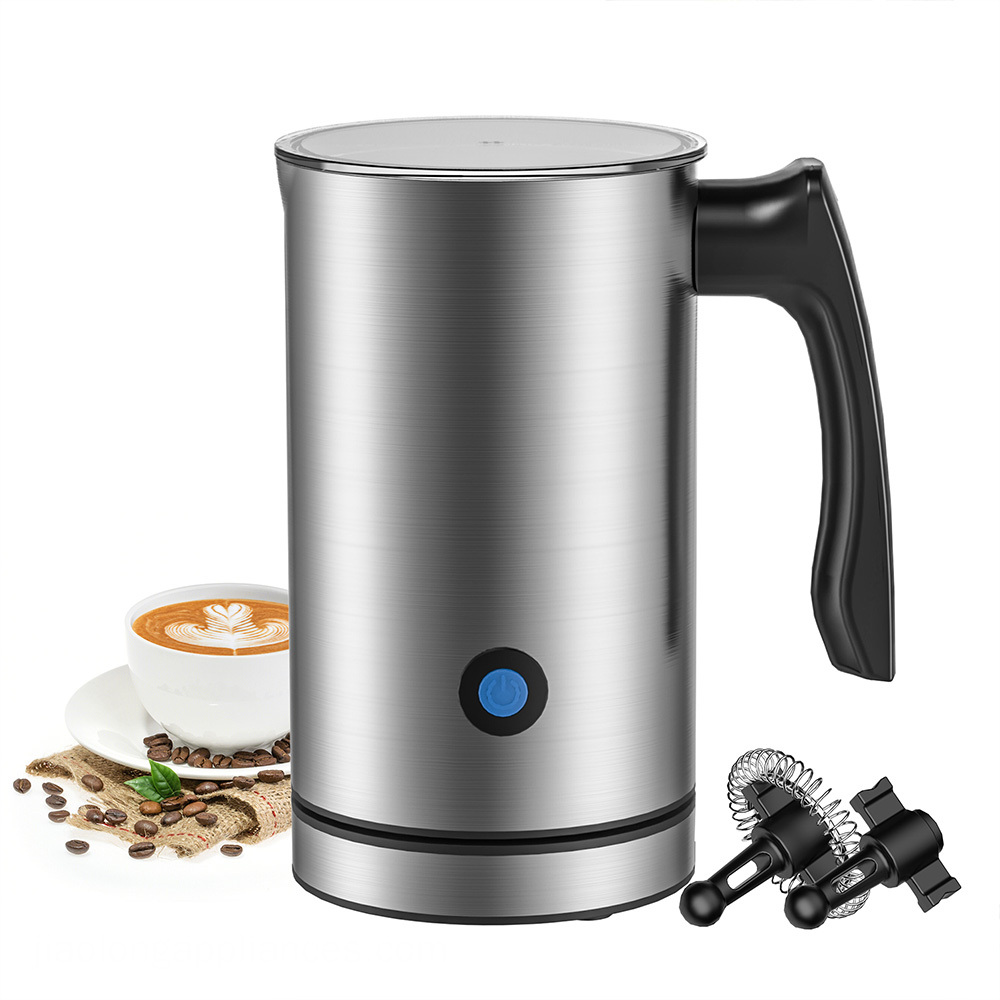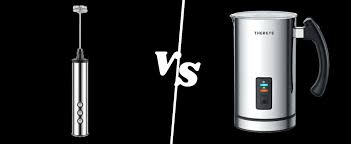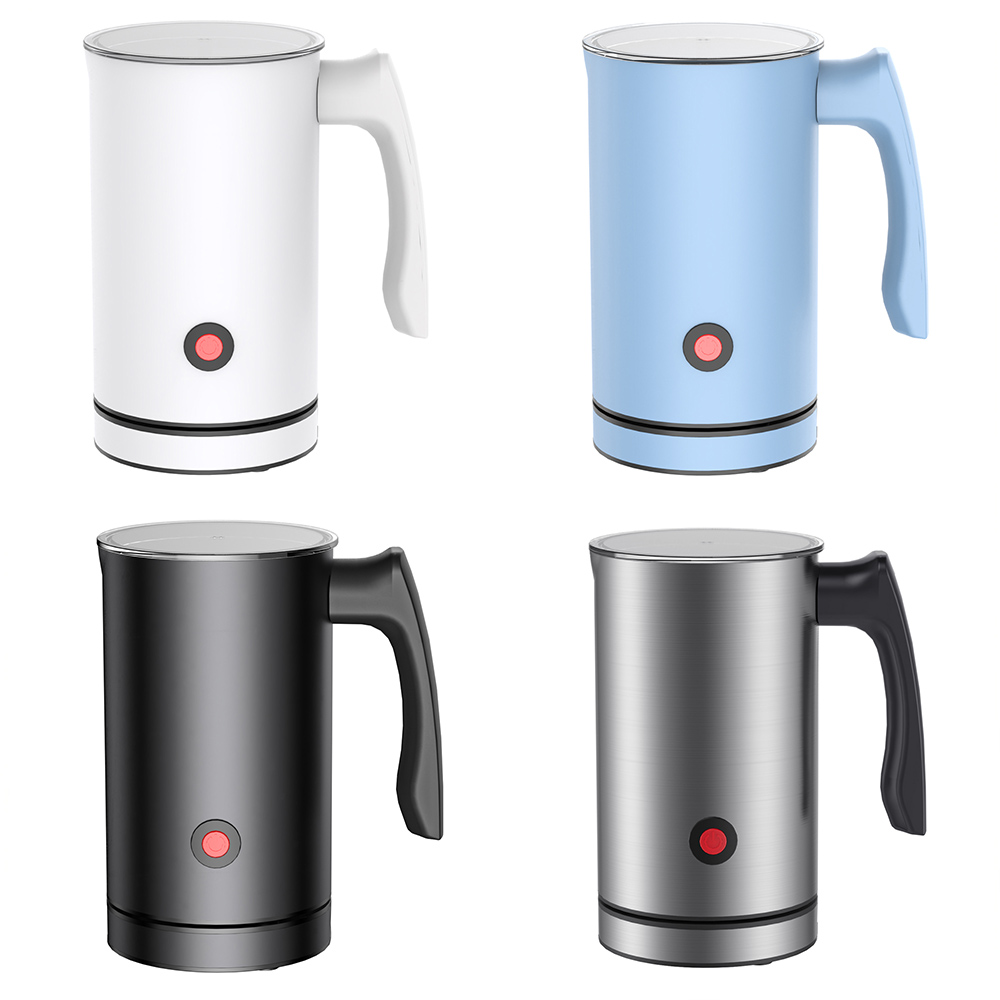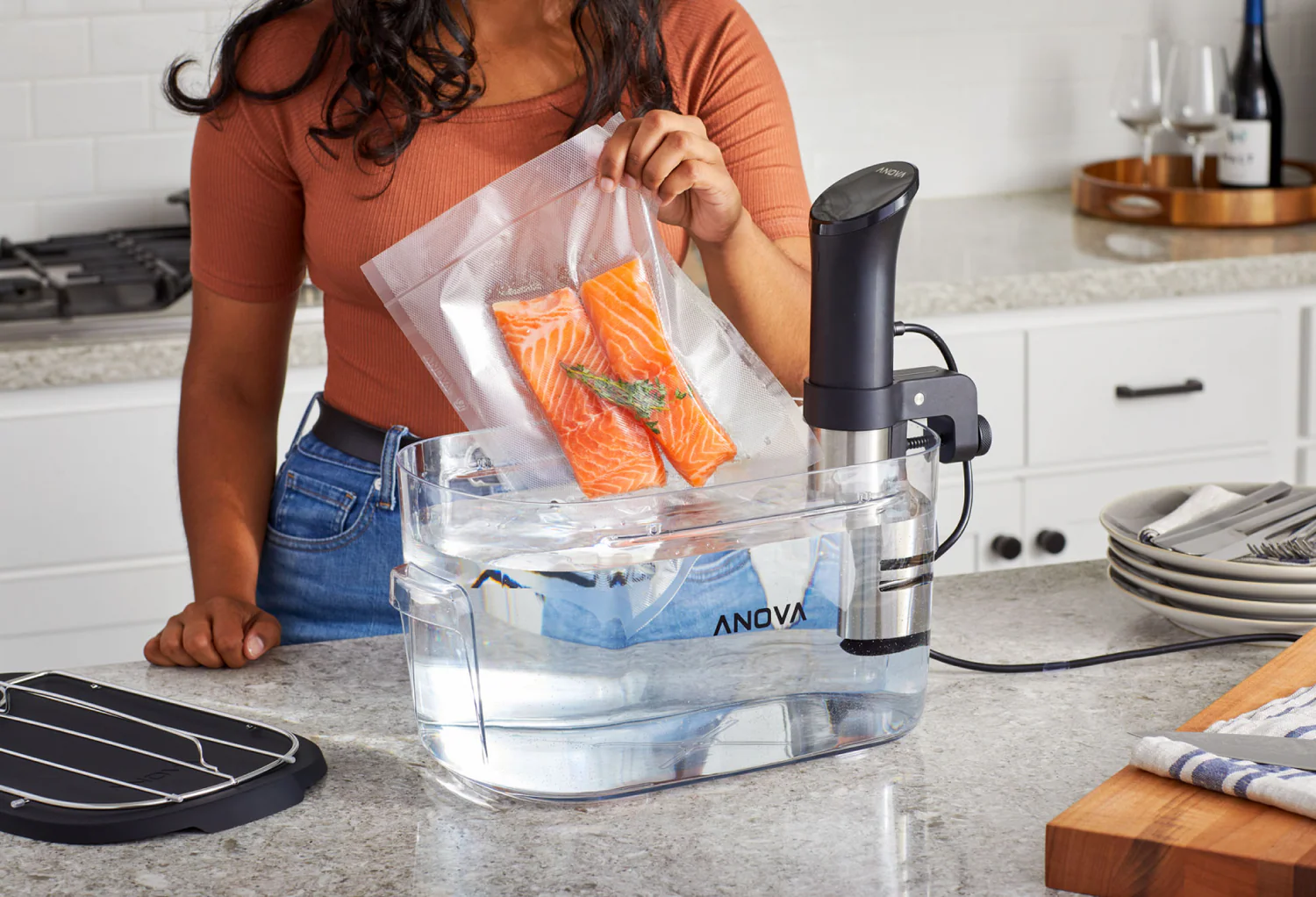Electric Milk Frothers vs. Manual Frothers: Which Is Better for Commercial Use?
- Understanding the Basics of Milk Frothers
- What Is a Milk Frother?
- How Electric Milk Frothers Work
- How Manual Milk Frothers Work
- Key Differences Between Electric and Manual Milk Frothers
- Frothing Speed and Efficiency
- Foam Texture and Consistency
- User Effort and Ease of Operation
- Heating Functionality (Built-in vs. External Heat Source)
- Comparing Performance in Commercial Environments
- Volume Capacity and Output Speed
- Durability and Maintenance Requirements
- Power Source and Workspace Compatibility
- Operator Skill Requirements
- Cost Considerations: Initial Investment vs. Long-Term Value
- Price Range of Electric vs. Manual Frothers
- Operating Costs: Electricity, Labor, and Repairs
- ROI Analysis for Cafés, Hotels, and Coffee Kiosks
- Pros and Cons Summary for Commercial Use
- Advantages of Electric Milk Frothers in a Commercial Setting
- When Manual Frothers Might Be Suitable for Business Use
- Conclusion: Which Frother Is Better for Your Commercial Needs?
Understanding the Basics of Milk Frothers
It is important to learn what milk frothers are and how they work before making a choice on which type of milk frother is more convenient to use commercially. These are used to aerate milk and form a layer of foam, which adds texture, taste, and appearance to drinks such as cappuccinos, lattes, macchiatos, and even hot chocolate. In a business setting, like a cafe, coffee shop, or breakfast station in a hotel, the quality and the rate of the milk frothing directly affect the efficiency of the service and the satisfaction of the customer.
Milk frothers are of two major categories, namely, electric milk frothers and manual milk frothers, which are highly used today. Electric frothers are available in many different types, such as handheld wands and automatic countertop units, and the latter have built-in heating and foam density adjustment. Manual frothers, however, are frothers that depend on physical exertion, usually by a plunger or mesh system, to froth milk that has been preheated. All of them possess their working principles, advantages, and drawbacks, which are particularly important during the consideration of their use for high-volume or professional purposes.

What Is a Milk Frother?
A milk frother is an apparatus that whips milk to add air to it to form microfoam. This foam gives milk-based drinks a creamy texture and a better flavor profile. In business, quality and foam quantity are essential to satisfy the customers, particularly in the case of barista-style drinks.
How Electric Milk Frothers Work
Electric milk frothers have a motorized whisk with a heating element to heat and froth milk at the same time. The majority of electric frothers on the market are of commercial grade, and they are programmed to have preset temperatures, automatic power off, and various froth density levels—perfect for streamlining the operations of a cafe. Other brands such as Jiaolong have milk frothers that are electric and are made to be durable and precise with commercial users in mind.
How Manual Milk Frothers Work
Manual frothers involve the user pumping or swirling the milk with a mesh plunger or whisk. Although they are independent of electricity and can be used anywhere, they require more effort and are less consistent in creating uniform foam texture, which may be difficult to achieve in busy service times.
Key Differences Between Electric and Manual Milk Frothers
The electric and manual milk frothers should be chosen based on a number of technical and operational aspects. Here are the main differences to understand what the best milk frother is to use in a commercial setting.

Frothing Speed and Efficiency
The rate of frothing can directly affect the customer turnover and wait time in business establishments that have high volume. Electric milk frothers are superior in this regard, as they can produce rich, stable foam in less than a minute. They can be automated to enable the baristas to perform other tasks as the frother operates. Manual frothers, in their turn, require physical effort and are slower, which may slow down the workflow during the busy hours and lower the overall service efficiency.
Foam Texture and Consistency
Milk foam quality is very important in providing a professional coffee experience. Electric milk frothers are designed to produce smooth, silky microfoam with perfect air-to-milk ratios, which are perfect to make latte art and specialty drinks. Manual frothers, however, have a tendency to be inconsistent, and the bubbles are larger and of varying density, depending on the technique of the operator. It becomes more difficult to ensure consistency among drinks in a business setting.
User Effort and Ease of Operation
Electric milk frothers need little human intervention; all you need to do is pour the milk and press a button, and the machine does the rest. This operation without hands saves the fatigue of the staff and guarantees the consistency even when inexperienced baristas are working. Manual frothers, however, are fully dependent on manual power, which can cause an uneven result and increased physical effort with prolonged use; thus, they are not as suitable in high-volume production.
Heating Functionality (Built-in vs. External Heat Source)
The primary benefit of electric milk frothers is that they are equipped with heating elements. They allow the user to heat and froth the milk at the same time, which makes the work process more efficient and time-saving. Manual frothers do not have this option, so milk has to be heated separately, which is not only complicated but also introduces the risk of temperature variance, especially in situations where speed and quality have to be reconciled.
Comparing Performance in Commercial Environments
The choice of whether to use electric or manual milk frothers in the business world is not a question of taste alone; it is a question of money and consistency. Catering services, coffee shops, and hotel buffets require tools that can withstand pressure and not affect the quality. The requirements are large-scale production, low maintenance, and easy operation by personnel with different levels of expertise. Although both electric and manual frothers can be used in foodservice, one of them is obviously more scalable and convenient.
Let us now look at how the two fare in terms of key performance indicators.
Volume Capacity and Output Speed
In environments of high demand, the amount of output is a determining factor. Commercial-grade electric milk frothers are able to froth between 8 and 20 ounces of milk at one time and serve multiple drinks without having to wait. Their automated systems also decrease the time between batches. Manual milk frothers, on the other hand, tend to be smaller in chamber size and need to be allowed to recover between each use. This constrains their capacity to react to fast or heavy demand.
Durability and Maintenance Requirements
The other significant factor is durability. Electric frothers designed to be used commercially—like those developed by Jiaolong—are put through intense testing and are made with high-quality materials so that they last a long time. Most of them have stainless steel interiors and self-cleaning features that save on maintenance time. Manual frothers are simpler mechanically and less likely to have electrical faults, but they may last shorter with frequent commercial use and may need more hands-on cleaning after each use.
Power Source and Workspace Compatibility
The environment in which work is carried out has a great impact on frother choice. Electric milk frothers need a steady source of electricity and a steady countertop arrangement, which is usually present in cafes or breakfast bars in hotels. However, manual frothers are more convenient in mobile environments or temporary booths where space is limited or where a power supply is not available. They are cordless, so they can be used off-site or in low-footprint dessert bars.
Operator Skill Requirements
The training and variability of skills of the staff are major issues in commercial environments. Electric frothers are user-friendly and require little input by the user—perfect in an operation with a high staff turnover rate or with baristas that lack experience. Such machines guarantee uniformity in the quality of foam at the touch of a button. Manual frothers are highly individual and must be trained to produce high-quality and consistent foam, which can be a drawback in busy or fast-paced environments.

Cost Considerations: Initial Investment vs. Long-Term Value
The initial cost of the equipment is a decisive factor in deciding between an electric and manual frother, but it is not the only one. You ought to also look at long-term ROI, like efficiency, labor savings, and customer satisfaction.
Price Range of Electric vs. Manual Frothers
Manual frothers are sold at 20-50 dollars, and electric frothers start at 60 and go up to more than 300 dollars depending on the features. The high-end commercial units can be increased further but provide superior output.
Operating Costs: Electricity, Labor, and Repairs
Electric ones need electricity and can sometimes be repaired. Nevertheless, they do not spend money on labor and training. Manual units are less demanding in terms of maintenance, but they are more labor-intensive.
ROI Analysis for Cafés, Hotels, and Coffee Kiosks
In the case of businesses that handle 50+ drinks in a day, the time saved and consistency achieved with the electric frothers more than make up for the higher initial price, offering a better ROI and service level.
Pros and Cons Summary for Commercial Use
In order to make a decision, it is useful to summarize the comparative advantages and disadvantages of both types of frother in relation to commercial application. Finally, you must make a decision based on the scale of your business, the number of customers, and the budget you have. Generally, electric milk frothers are suitable in high-volume, high-demand environments, whereas the manual frothers are more applicable in low-volume, cost-sensitive environments.
Knowing your operational requirements and aligning them with the appropriate equipment, you will be able to enhance the quality of your service, streamline the working process, and make it more pleasant for both the employees and the customers.
Advantages of Electric Milk Frothers in a Commercial Setting
- Frothing action that is stable and rapid
- Built-in heating, and a variety of foam types
- Not much training is required
- Durable materials and programmable features
- Applicable to high-volume business
When Manual Frothers Might Be Suitable for Business Use
- Activities that do not have power access
- Operations without access to power
- Low-cost businesses or mobile cafes on a budget
- Environments that give priority to artisanal control
Conclusion: Which Frother Is Better for Your Commercial Needs?
In the majority of business uses, the electric milk frother is the obvious choice. It is fast, consistent, and capable of processing high volumes of orders. Conversely, manual frothers are cheap and easy to carry around, but they are more labor intensive and less consistent and thus better suited to low-output applications.
Are you looking for a reliable manufacturer of commercial milk frothers with high performance? Jiaolong is the right option. Jiaolong possesses powerful production capabilities, global certification, and a dedication to intelligent, convenient appliance design so that brands can take the quality and efficiency of their kitchen to the next level.
Are you willing to renovate your business facility? Jiaolong is ready to talk to you about OEM/ODM or purchasing high-quality electric milk frothers that can meet your business needs.

Mastering Mastication: Your Complete Guide to the 'Juicer Machine Slow' Revolution

How to Partner with a Slow Juicer Manufacturer for OEM/ODM Success

How to Choose the Best Milk Frother for Oat Milk in 2026

Energy-Efficient Commercial Sous Vide: Reducing Costs While Enhancing Output

Sous Vide for Central Kitchens: Ensuring Food Safety and Shelf-Life Extension
OEM & ODM
Do you provide after-sales service and technical support?
Yes, we provide after-sales service and technical support for all OEM and ODM products. We have a professional customer service team that can answer any questions encountered during use. If there is a quality problem with the product, we will return or repair it according to the warranty policy.
What is the delivery time for customized products?
The delivery time usually depends on the complexity of the product, the degree of customization, and the production schedule. Generally speaking, the delivery time for OEM products is 30-60 days, and ODM products may take longer for design, sample production and testing. We will confirm the delivery time with the customer based on the specific situation.
Can I change the product design or function?
In ODM services, customers can completely change the design or function, and we will make corresponding modifications according to your needs. In OEM services, if the modification does not affect the core function of the original design, appropriate adjustments can also be made. We will provide samples for your review after confirming any design and functional changes.
What is the minimum order quantity for customized products?
The minimum order quantity (MOQ) usually depends on the type of product, customization requirements and production cycle. Generally speaking, our MOQ is usually 500 to 1000 units, and the specific number can be adjusted according to your needs and the complexity of the project.
Service
How to make an appointment for regular maintenance service of the equipment?
You can make an appointment for regular maintenance service through our website or customer service hotline.

Jiaolong's L601 Slow Juicer: The perfect choice for slow juicer manufacturers, suppliers, and wholesalers. High-quality, efficient extraction. Contact us for wholesale inquiries.

Jiaolong's L605A Slow Juicer: A high-quality slow juicer for OEM, manufacturing, and supply needs. Contact us today to explore our slow juicer manufacturing capabilities and become a valued partner.

Jiaolong's L606A slow juicer: The ultimate slow juicer for wholesale, manufactured and supplied by a leading slow juicer supplier. Experience superior juice extraction and quality. Contact us for bulk orders.

Jiaolong's Sous Vide SV220: A premium Sous Vide ODM solution. Reliable and efficient, the SV220 is the perfect choice for your next project. Partner with a leading sous vide supplier. Contact us today!
Contact Us for Customized Kitchen Appliance Solutions
Have any questions or cooperation needs? We are here to help you at any time!
Please contact us through the following methods, we look forward to working with you to create a better kitchen life experience!
© 2025 JIAOLONG All Rights Reserved. Privacy Policy | Terms and Conditions | Sitemap
